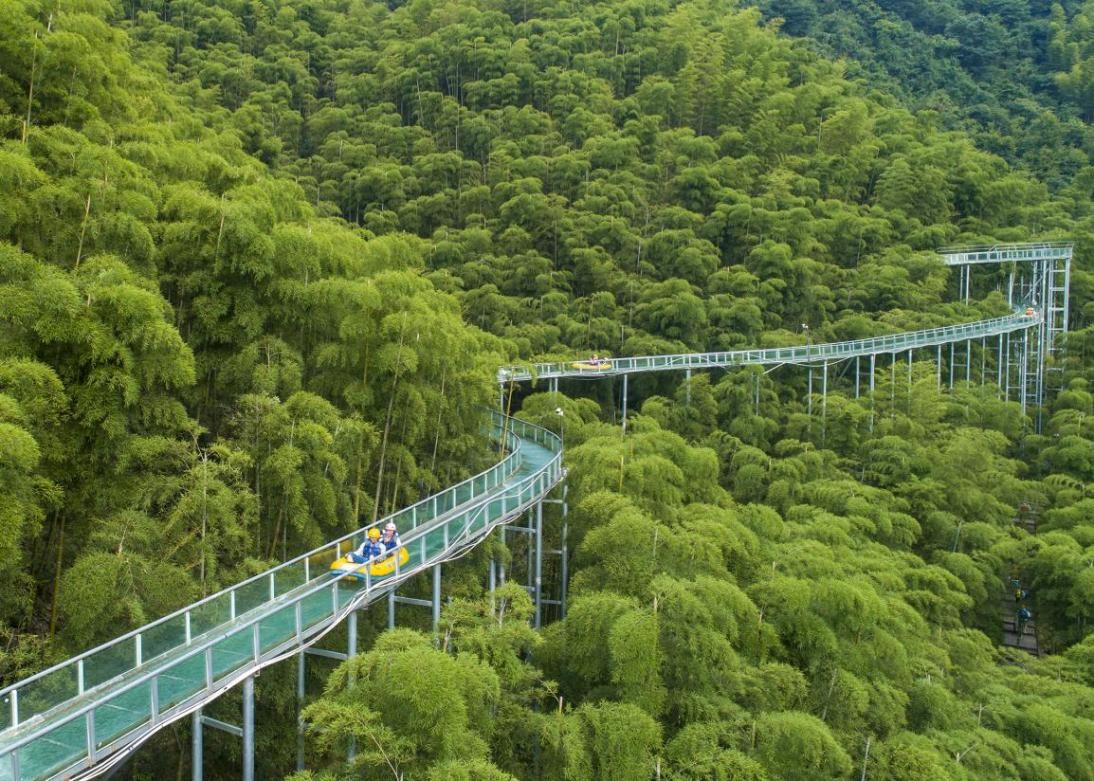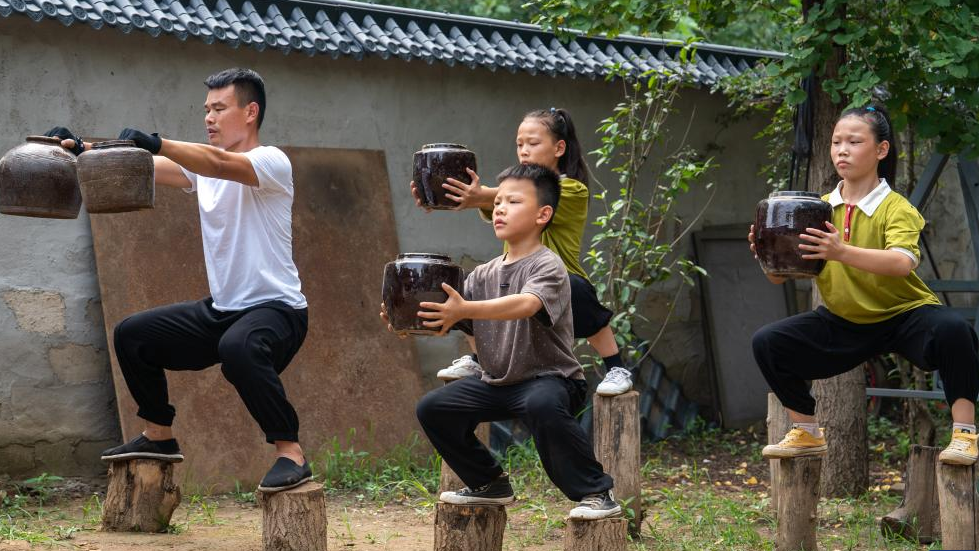China's forestry industry flourishes as output value exceeds 8 trillion yuan mark

Tourists experience water slide over a bamboo forest in Shangshu township, Anji county, Huzhou, east China's Zhejiang province, July 27, 2022. (People's Daily Online/Xia Pengfei)
The total output value of China's forestry industry has now exceeded 8 trillion yuan (about $1.17 trillion), more than double the number in 2012. The country is now among the world's leading players in terms of the scale and growth rate of its forestry industry.
Over the past decade, China has fully promoted ecological progress and adhered to the notion that lucid waters and lush mountains are invaluable assets, bringing tangible benefits to villagers.
China has continuously enriched its forestry products. At present, there are over 10,000 different kinds of wood and bamboo products available across the country. China has meanwhile planted over 100 million mu (or 6.67 million hectares) of bamboo. With an annual output value approaching 320 billion yuan, the country's bamboo sector has helped over 15 million people working in the industry to earn a per capita annual income of more than 10,000 yuan.
Gaofeng village in Dongting township, Guangde city of east China's Anhui Province is home to over 11,000 mu of bamboo forests. In recent years, the village has formed a complete industrial chain integrating the processing of bamboos and the comprehensive use of bamboo waste, said Zhang Changwei, Party head of Gaofeng village.
Zhang introduced that over 110 villagers transferred their rights to manage about 7,000 mu of bamboo forests to the village's cooperative. In 2021, the per capita net income of villagers had risen to reach 33,000 yuan.
Chen Zhaobing is one of the locals who has benefited from the flourishing bamboo sector. Chen transferred 20 mu of his bamboo groves to the cooperative, and now works as a driver for a bamboo processing plant. After combining a regular job with the transfer of his bamboo forests to the cooperative, Chen has been able to earn a total income of more than 100,000 yuan per year.
China has planted over 68 million mu of camellia oleifera, which is a species of woody-oil plant, which has provided an annual yield of about 900,000 tonnes of camellia oil. Besides, the annual yield of edible oil extracted from the fruits of other woody plants such as walnut and olive trees exceeds 300,000 tonnes.
Over the past 10 years, China has developed 600 million mu of commercial forests, with the output value of commercial forestry products surpassing 2.2 trillion yuan, more than twice that of a decade ago.
Meanwhile, new business forms and models in the forestry industry such as flower and medicinal herb planting, eco-tourism, healthcare, and the under-forest sector have continued to boom throughout China. So far, the output value of the country's under-forest sector has reached 956.3 billion yuan, with 34 million people engaged in the sector.
China has pursued the high-quality development of its forestry industry, creating a series of highly processed and high value-added products. The annual output value of three major sub-sectors of the forestry industry, including wood processing and the manufacturing of wood and bamboo products, commercial forestry products, and forest-related tourism and leisure services, has come to exceed over 1 trillion yuan, respectively.
In Anji county of east China's Zhejiang Province, bamboo stems can be used to make over 3,000 different kinds of products. The output value of the county's bamboo sector accounts for 10 percent of the country's total despite the overall volume of bamboo production in the county only comprising 1.8 percent of the country's total.
At present, China is home to 511 leading enterprises in the forestry industry, 75 national forestry industry demonstration parks, 649 national demonstration bases for the under-forest economy, and 96 national forest-based healthcare bases.
Photos
Related Stories
- From grimy past to greenish present through ecological restoration efforts
- Chinese premier stresses forest fire prevention and control
- Developing forestry and grassland industry brings villagers out of poverty in Ningxia
- China unveils development plans for forestry industry
- China’s total forestry output expected to exceed 7 trillion RMB this year
- China stresses efforts to fight desertification
- China's forestry booms in past decade
- Factbox: China's forestry development in 2014
- China's forestry output hits 4.46 trln yuan
- China's forestry output to hit 9 trln yuan in 2020
Copyright © 2022 People's Daily Online. All Rights Reserved.









